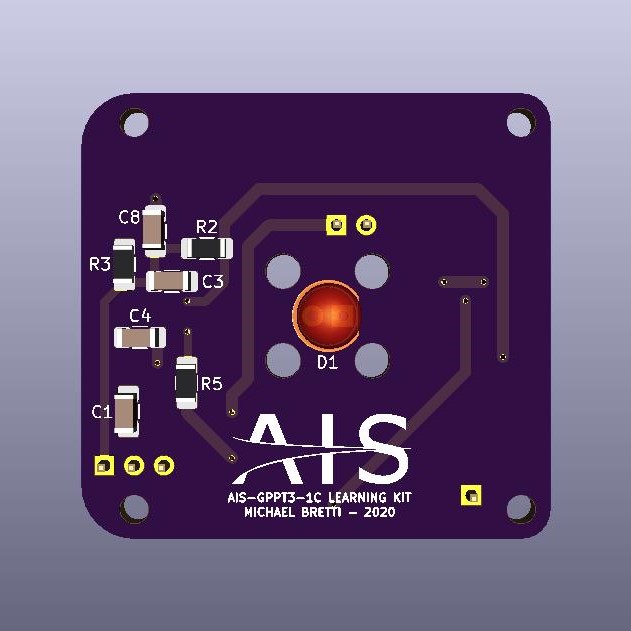Despite the massive vacuum equipment setbacks and failures, I am still looking to try to move forward with some developments. I finally finished and am pleased to present a look at the first ever AIS thruster learning kit!
Vacuum is one of the biggest barriers of entry for electric propulsion. While I have made my thruster builds open, not everyone can actually build and test them. I have decided that with each successful system, I will make a 1:1 simulation kit that operates very close to the real thing.
This kit is a 1:1 scale model of the AIS-gPPT3-1C, simulating full operation of the thruster. Board size, pin connection placement, inputs, and output signals will be the same. An enable command arms the thruster, and a trigger pulse allows you to fire the thruster, flashing a purple LED to simulate the purple flash of the resulting plasma plume. Like the gPPT3, the repetition rate is set to charge to maximum voltage at 1/3 Hz, and the thruster cannot fire unless enabled first. The main readout outputs a 1 uS pulse simulating the main discharge, and the trigger readout puts out a 10 uS pulse to simulate the trigger discharge. The kit will come with a 3D printed version of the gPPT3 thruster stack that bolts onto the board right over the LED. Control of the thruster can be done with any Arduino or microcontroller, and the same control sequence I use will be provided for operation of the kit.
If the ILIS1 ever works, I will make a similar kit for it as well. My hope is that thruster kits like these can provide anyone an opportunity to play around with electric propulsion systems, and control real vacuum fired and space-flown thrusters in a safe, low-cost way right on the table.
Lowering the barrier of entry to the field is not just about the newest state of the art tech or even cheaper systems. It is about true accessibility, and bringing the fundamentals and practical elements to a level that anyone who is interested can get involved with.


